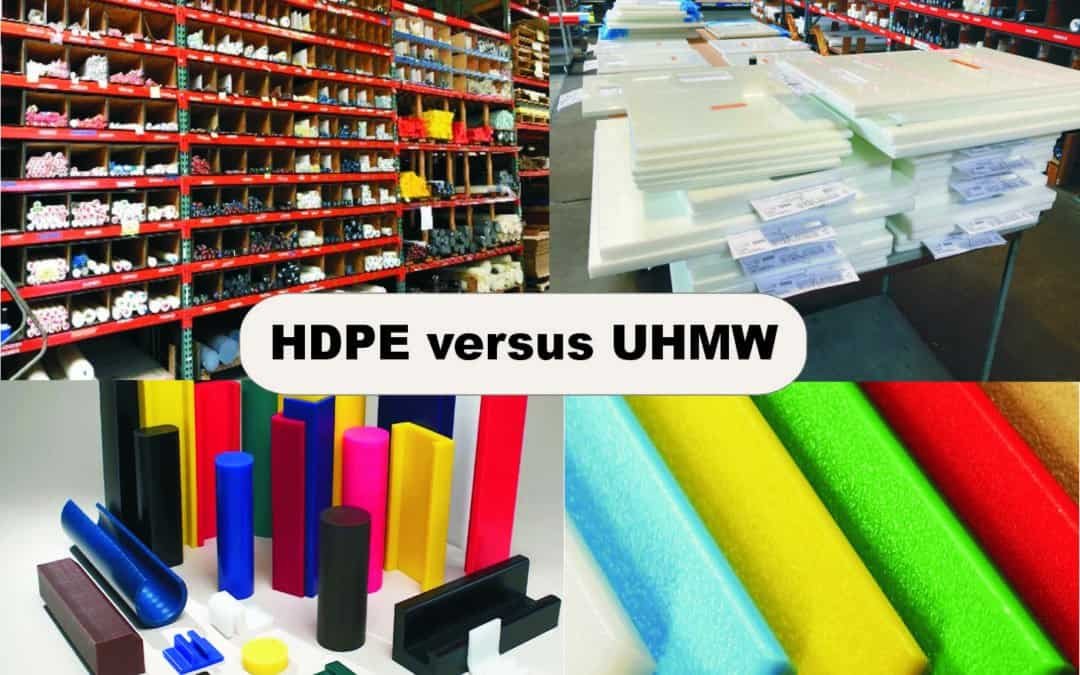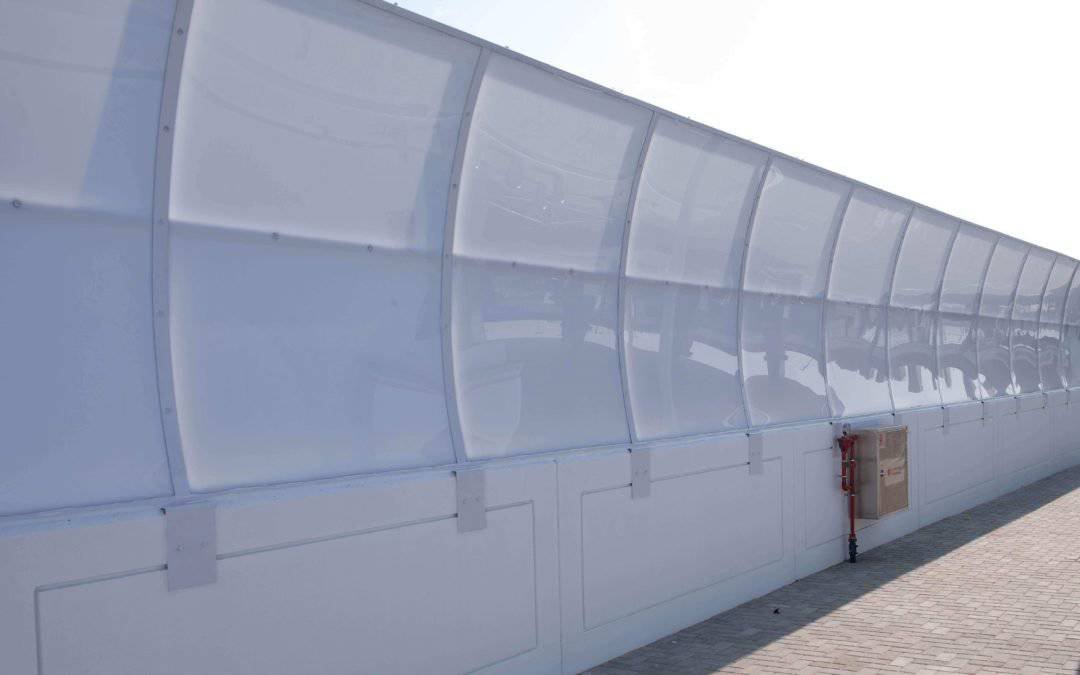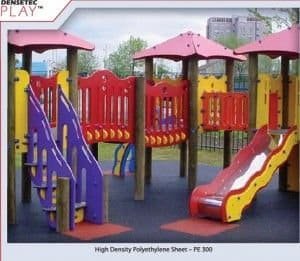
Comparing HDPE and UHMW Polyethylene
HDPE vs UHMW: When to Use High-Density Polyethylene
HDPE and UHMW are popular and well known types of plastics across many different industries for their reliability, so much so that many people have started to use them interchangeably. However, their uses don’t coin ![]() cide nearly as often as many think–HDPE has different qualities that lend well to different applications. While both materials are very light, with a density of .94 – which means they both float in water.
cide nearly as often as many think–HDPE has different qualities that lend well to different applications. While both materials are very light, with a density of .94 – which means they both float in water.
When best to use HDPE
High-Density Polyethylene or HDPE is known for its versatility and low moisture absorption, which result from its high-density chemical makeup. Its chemical composition also makes it highly chemical resistant, so it’s excellent for applications that involve moisture or mild chemicals.
HDPE is also very easy to machine and shape. As a result, it has been used successfully to make plastic lumber, milk jugs, containers, cutting boards, and many other products.
In addition to being easy to machine, HDPE sheet and rod are also relatively lightweight, and can be NSF and FDA compliant. This very durable material can not be glued or bonded, and thus must be heat welded together or attached with mechanical fasteners. HDPE is excellent for applications where reduced weight and low costs are paramount. This, combined with its easy machinability, allows HDPE to be cut, drilled, routed and shaped for many different end uses. Food cutting boards, piping, storage vessels, marine components, and many more benefit from HDPE. It’s also been successful in outdoor furniture, signage, playground equipment, structural tanks, food processing equipment, vacuum-formed parts, transfer boards, tank liners–and this is just a small number of its applications.
When not to use HDPE
While HDPE and UHMW have similar properties, they are often better suited to different tasks. Both plastics do have high impact resistance, but UHMW (Ultra-High Molecular Weight Polyethylene) performs better in applications where friction and constant impact are present. The UHMW molecular chain is much longer, thus giving UHMW the extreme wear resistance. This results in UHMW being used more often in functional components, like conveyor systems, concrete chute liners, mated parts, bumpers, and bearing applications. HDPE does not perform as well as UHMW under constant friction, making HDPE better for food processing surfaces, chemical resistant parts, decorative products, or components that will not experience constant friction. If a reduced friction application is needed, the use of UHMW with a coefficient of friction of just 0.08 (compared to HDPE with a coefficient of friction of 0.20) is much more suitable.
Find all your performance plastics at Industrial Plastic Supply
We are performance plastics experts, with a vast inventory available and the most experienced customer service team to offer our customers. Contact us today for more information about what we can do for you.

